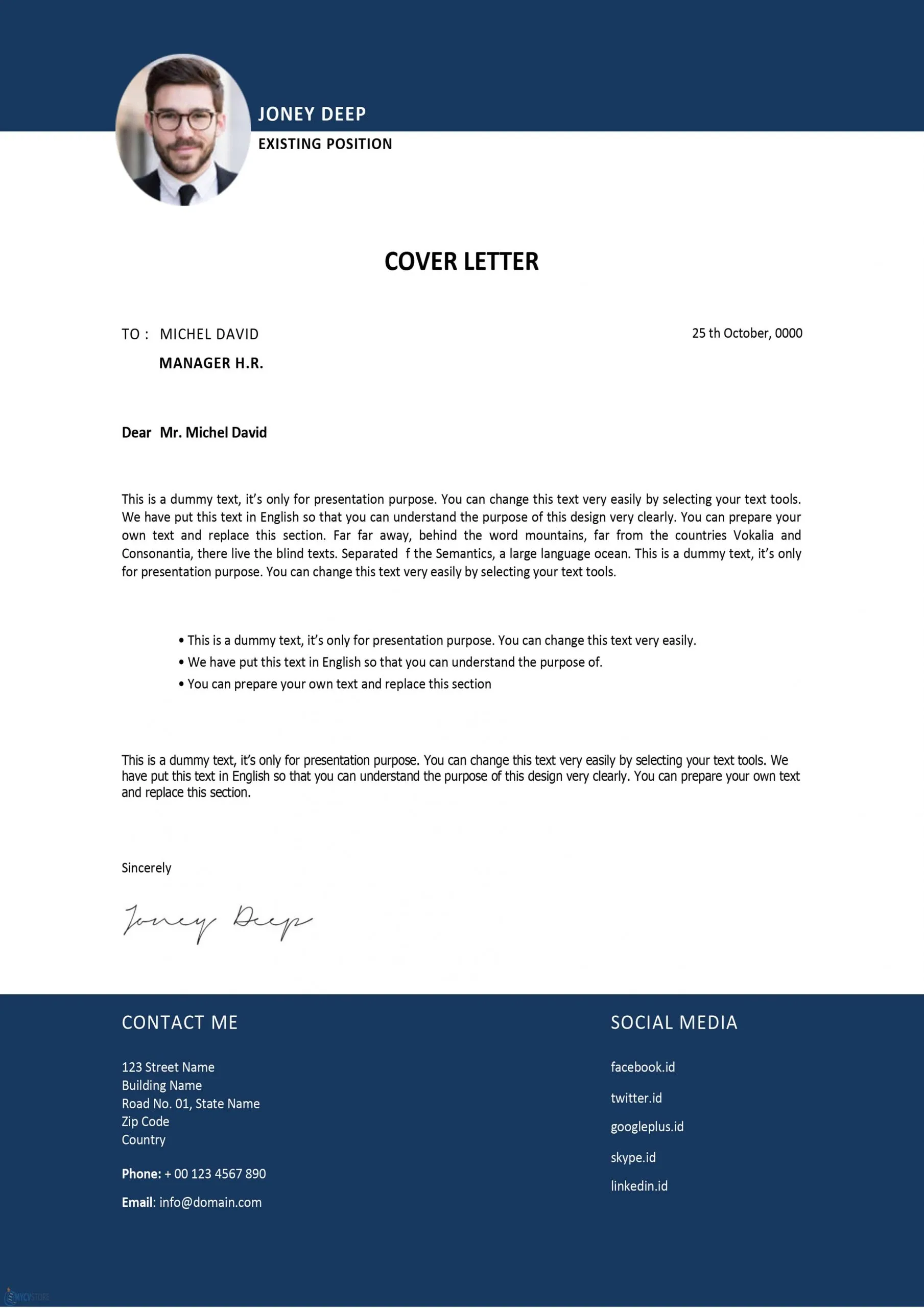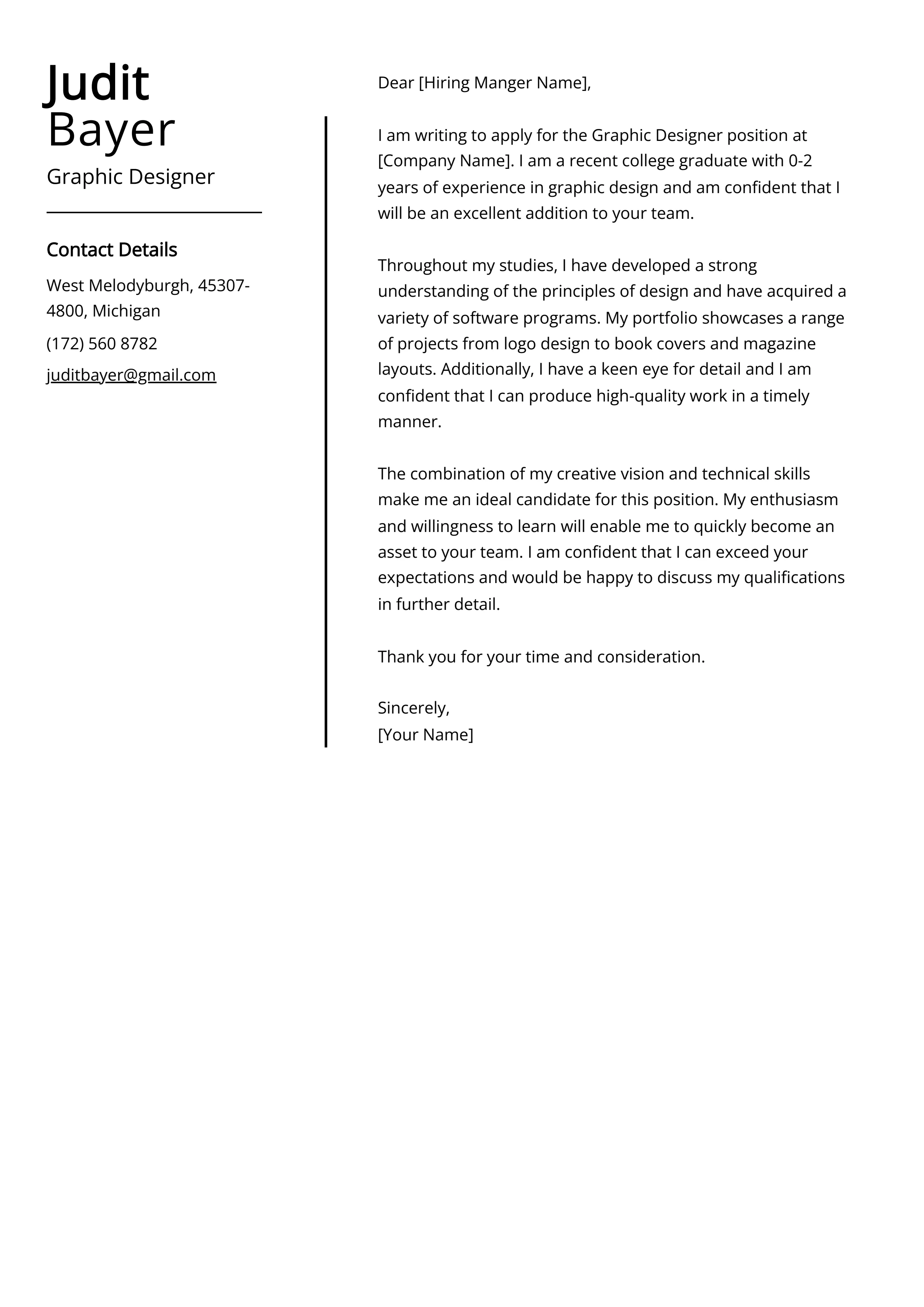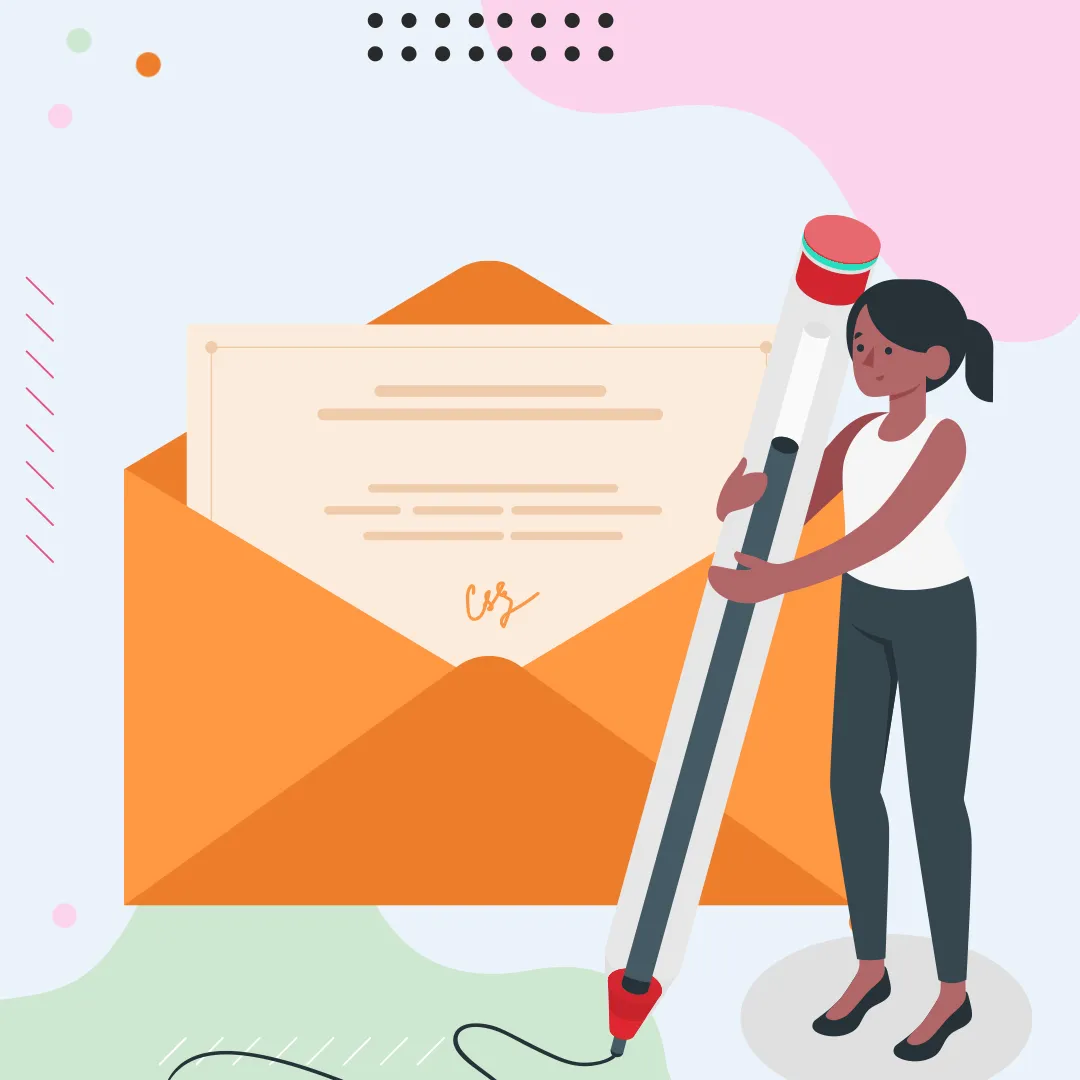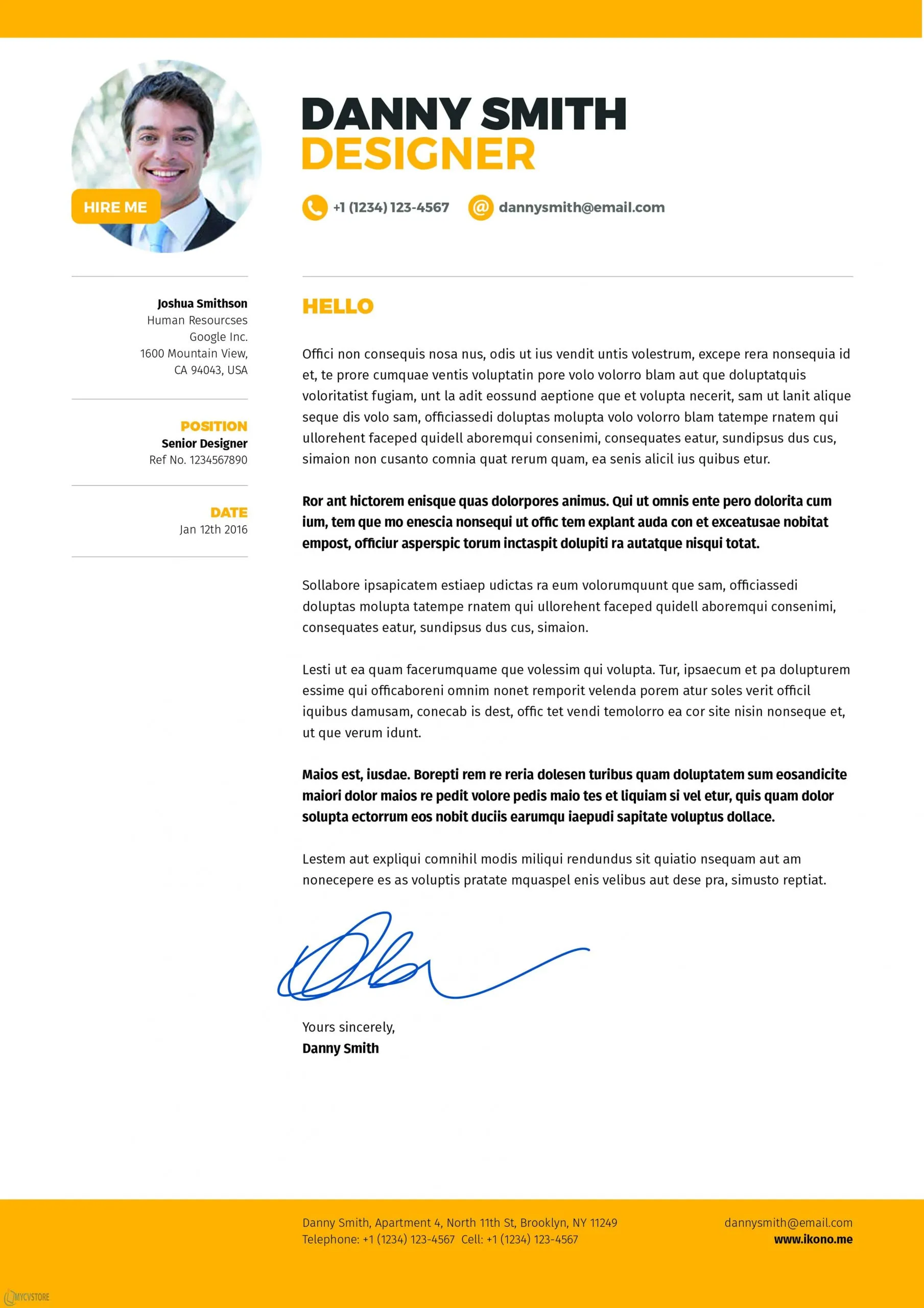A well-crafted cover letter is your initial introduction to a potential employer, a crucial first step in securing your dream graphic design job. It’s your chance to not only showcase your skills and experience but also to demonstrate your personality and passion for design. A cover letter can distinguish you from other applicants and greatly improve your chances of an interview. In a field as competitive as graphic design, a compelling cover letter is not just recommended, it’s essential. This guide will give you the tools you need to craft a cover letter that grabs attention and helps you stand out from the competition.
Highlighting Your Graphic Design Skills
Your cover letter should instantly communicate your core competencies. Start by listing your most relevant skills, tailoring them to match the job description. Instead of generic statements, provide specific examples of how you’ve applied those skills in the past. For example, instead of writing “proficient in logo design,” you could state, “Developed over 20 successful logos for diverse clients, resulting in increased brand recognition and customer engagement.” Mention projects where you excelled and what specific design skills you used. Quantifying your achievements will provide tangible evidence of your abilities, making a stronger impression on the hiring manager. Show them not just what you can do, but the results you’ve achieved.
Showcasing Design Software Proficiency
Graphic designers must be proficient with industry-standard software. List the software you’re skilled in, such as Adobe Creative Suite (Photoshop, Illustrator, InDesign), Sketch, or other relevant tools. Mention your experience level with each program, whether it’s beginner, intermediate, or expert. Beyond just listing software, briefly describe how you’ve utilized these tools in past projects. This demonstrates that you understand how to translate creative concepts into tangible designs using the appropriate technology. Including certifications or training related to the software can further boost your credibility and show your commitment to continuous learning and development in the graphic design field.
Creating a Compelling Cover Letter

Your cover letter should be more than just a summary of your resume; it’s a personal narrative. Start with a strong opening that grabs the reader’s attention. Clearly state the position you’re applying for and where you found the job posting. Then, briefly explain why you’re a great fit for the role. Use a professional, yet engaging tone, and focus on your enthusiasm for the company and the opportunity. Address the hiring manager by name if possible (research is key!). Your letter should clearly convey your personality, professionalism, and passion for graphic design, making the reader excited to learn more about you.
Tailoring Your Cover Letter
One size does not fit all when it comes to cover letters. Tailor each letter to the specific job and company you’re applying for. Review the job description carefully and highlight the skills and experiences that align with the role’s requirements. Research the company’s values, mission, and design style. Customizing your cover letter shows the employer that you’ve done your homework and are genuinely interested in the opportunity. You can mention specific projects or aspects of their work that resonate with you. This level of personalization shows you’re not just sending out a generic application, but that you are truly interested in the specific company.
Demonstrating Design Skills
While your portfolio showcases your visual skills, your cover letter provides an opportunity to describe your design process and thinking. Explain your creative approach, how you solve design challenges, and your ability to collaborate with clients and teams. Discuss your understanding of design principles, such as typography, color theory, and composition. You can also share specific examples of how you’ve used design to achieve marketing goals, such as increasing brand awareness, driving sales, or improving user experience. Show them that you understand design at a conceptual level and can apply these concepts to real-world projects. By demonstrating your understanding of design principles, you show yourself as a professional.
Listing Your Design Software Knowledge

Clearly list the design software you’re proficient with. These can include the Adobe Creative Suite (Photoshop, Illustrator, InDesign, After Effects), CorelDraw, Sketch, Figma, or other relevant design tools. Mention the specific versions of software you’ve used and your proficiency level with each. Briefly describe how you use these tools to create designs. If you have any certifications or training related to these tools, make sure to include those. Being specific about your software skills assures employers of your ability to perform the job’s technical requirements, making them far more likely to consider your application.
Showcasing Design Portfolio
Your portfolio is your most important asset. Mention your portfolio in the cover letter and include a link to your online portfolio or provide clear instructions on how to access your work. Choose the best pieces of your work that are most relevant to the job requirements. Briefly describe the projects you feature and the impact of your designs. If you have any case studies or testimonials, consider including those to add credibility. You can also mention any awards or recognition you’ve received for your work. Make your portfolio easily accessible and well-organized to make it easy for the hiring manager to review your work.
Formatting Your Cover Letter
Proper formatting is crucial for making your cover letter readable and professional. Use a clean, easy-to-read font like Arial, Helvetica, or Calibri. Maintain consistent formatting throughout the document, including consistent margins and spacing. Keep your letter concise, ideally no more than one page. Divide your letter into clear paragraphs with headings to make it easy to scan. Check for any grammatical errors or typos before sending it. Presenting your cover letter in a well-formatted manner ensures your attention to detail, which reflects well on your graphic design skills.
Proofreading Your Cover Letter

Errors in your cover letter are a major turnoff. Proofread your cover letter carefully for any spelling mistakes, grammatical errors, or typos. It’s often helpful to have someone else review your letter to catch any mistakes you might miss. Read your cover letter out loud to catch any awkward phrasing. Check for any inconsistencies in formatting or information. A polished, error-free cover letter shows your professionalism and that you pay attention to detail, which is an important quality for a graphic designer.
Closing Your Cover Letter
Conclude your cover letter with a strong closing statement, reiterating your interest in the position and the company. Thank the hiring manager for their time and consideration. Include a call to action, such as inviting them to review your portfolio or stating that you look forward to hearing from them soon. Provide your contact information, including your email address and phone number. End your cover letter professionally with a formal closing, like “Sincerely,” or “Best regards,” followed by your full name. Leave a lasting positive impression to make sure you stand out.
Crafting a great cover letter for a graphic design job takes time and effort, but by following these tips, you can increase your chances of getting noticed. Highlighting your skills, showcasing your portfolio, tailoring your letter to the specific job, and proofreading carefully will set you apart from other applicants. A well-written cover letter is your first step towards landing your dream job. Remember to showcase your creative vision and expertise, and you’ll be well on your way to starting a successful career as a graphic designer!
